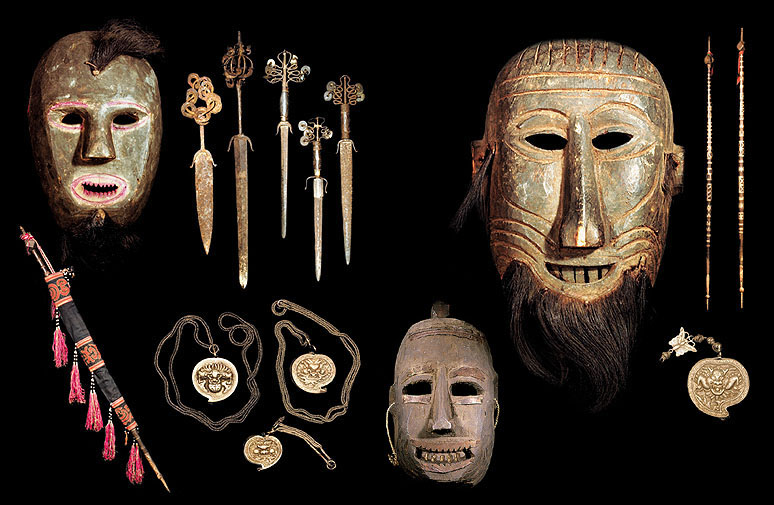With its bold images and strong shapes, tribal art from Africa and the Pacific has soared in popularity in recent years. But as prices have risen sharply and demand has outstripped supply, the number of fake pieces has grown steeply too. Fakes produced for the tourist market can be very hard to identify, so if you’re an inexperienced collector, buy from a reputable source who can guarantee the age of any piece.
Condition
Because of the extremes of the African climate, wooden objects which predate the early 20th century are rare. Wood often deteriorates, but a worn patina, as seen on this Urhobo male figure, is a desirable feature and adds to the value. This figure would fetch around £3,000 to £4,000.
Provenance
Provenance – a record of an item’s ownership and history – is fundamental to the value of tribal art. The most desirable pieces are those which have at some time been used for their intended domestic, ceremonial or ritual purpose, and were perhaps collected by colonial settlers or missionaries during the 19th or early 20th century.
Masks
Masks are one of the most popular collecting areas of tribal art; many were used in tribal festivities and have a symbolic significance. The Sepik mask show at the top of the page is particularly valuable because of its provenance: it comes from the collection of Frank Wonder who acquired it on an expedition to New Guinea in the 1920s. It’s worth around £5,000 to £7,000.
Calabashes
Hawaiian calabash bowls were status symbols made from the finest quality woods and passed down through families. Before the early 19th century they were usually hand-carved, while later examples were made on a lathe. Because the elaborate butterfly repairs on this one enhance its aesthetic appeal, it’s worth £4,000.
What to look for
- clubs from the Pacific Islands – smaller ones were thrown at enemies to knock them over, larger ones for killing them
- weapons with figurative carving
- silver African tribal jewellery
- Benin bronzes – though these are often faked, so beware
- Baule masks from the Ivory Coast









